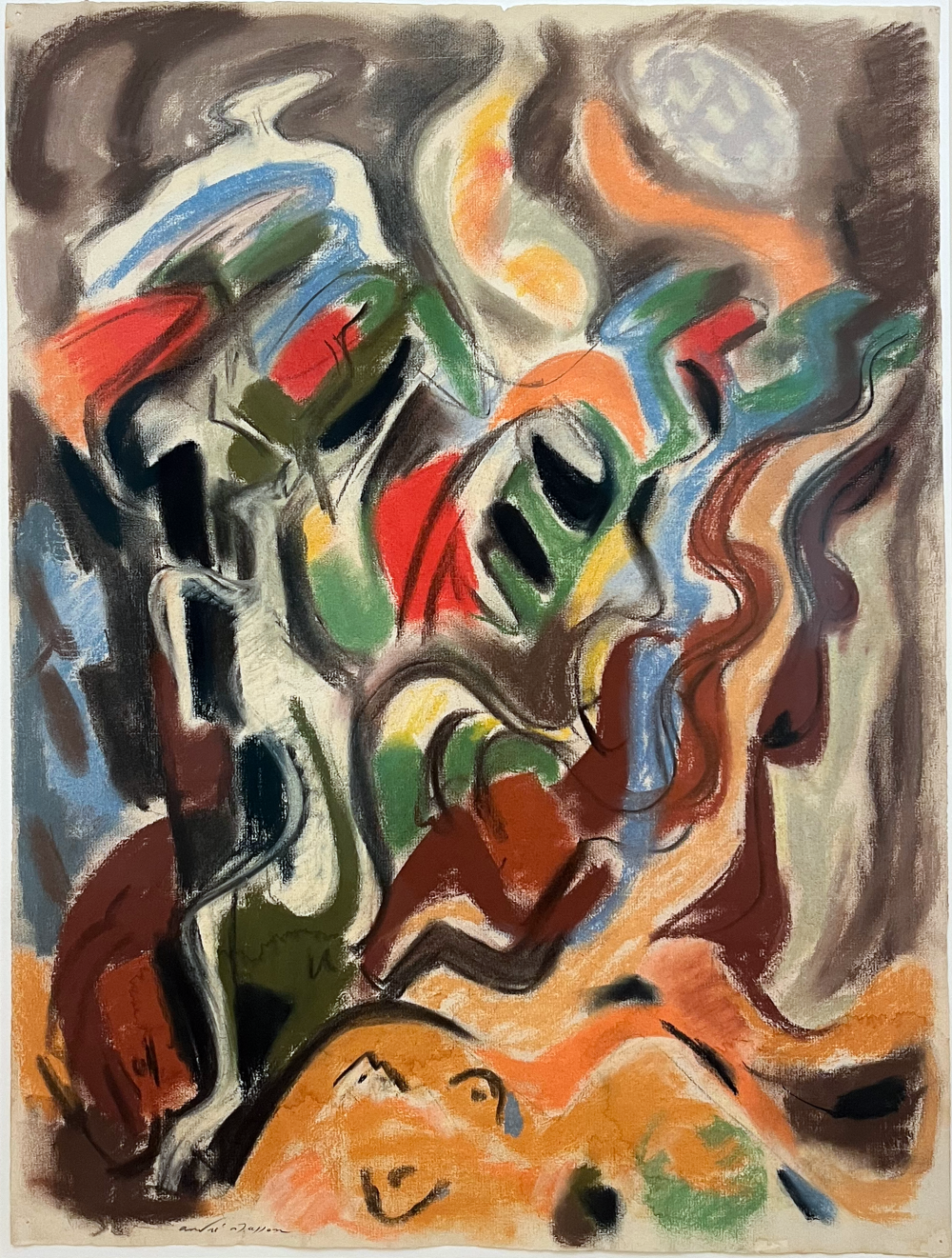Biography
His non-doctrinaire presence among the surrealists, the invention of automatic drawing and sand paintings, his fruitful complicity with the artists and thinkers of his time, the influence of his drawings and paintings on the beginnings of American abstract expressionism, form the best-known part of a work that still remains to be read in the power of its entirety.
A painter experimenting with new techniques and an outstanding designer, André Masson was also a sculptor, creator of theatre and opera sets, art critic, insatiable reader of encyclopedic culture, passionate about Western and Far Eastern mythology and philosophy, a remarkable poet and writer. A free and rebellious spirit, his work is driven by the profound conviction that "the only justification for a work of art [...] is to contribute to the broadening of the human being, to the transmutation of all values, to the denunciation of social, moral and religious hypocrisy and consequently to the denunciation of the ruling class, responsible for imperialist war and fascist regression". On the occasion of the hundredth anniversary of the Surrealist Manifesto, the Centre Pompidou-Metz pays tribute to the exceptional personality of André Masson whose emancipatory thinking remains powerfully current. The exhibition traces the artist's career by painting a portrait of a protean artist, open to collaborations and to the world, in search of incessant experimentation guided by the "dictation of the unconscious" and a desire for infinity.
Committed and sensitive to the upheavals of his century, whether historical or intellectual, André Masson is one of the greatest painters of the 20th century. His non-doctrinaire presence among the surrealists, the invention of automatic drawing and sand paintings, his fruitful complicity with the artists and thinkers of his time, the influence of his drawings and paintings on the beginnings of American abstract expressionism, form the best-known part of a work that has yet to be read in the power of its entirety. From the "Forests" that he painted after his traumatic experience of the First World War, to the orientalist paintings (inspired by ancient Chinese painting) that he produced in Aix-en-Provence in the 1960s, through his Spanish period and his American exile, this major retrospective will explore the different facets of André Masson's work as well as his close ties with the intellectuals, poets, filmmakers, playwrights and artists of his time.



